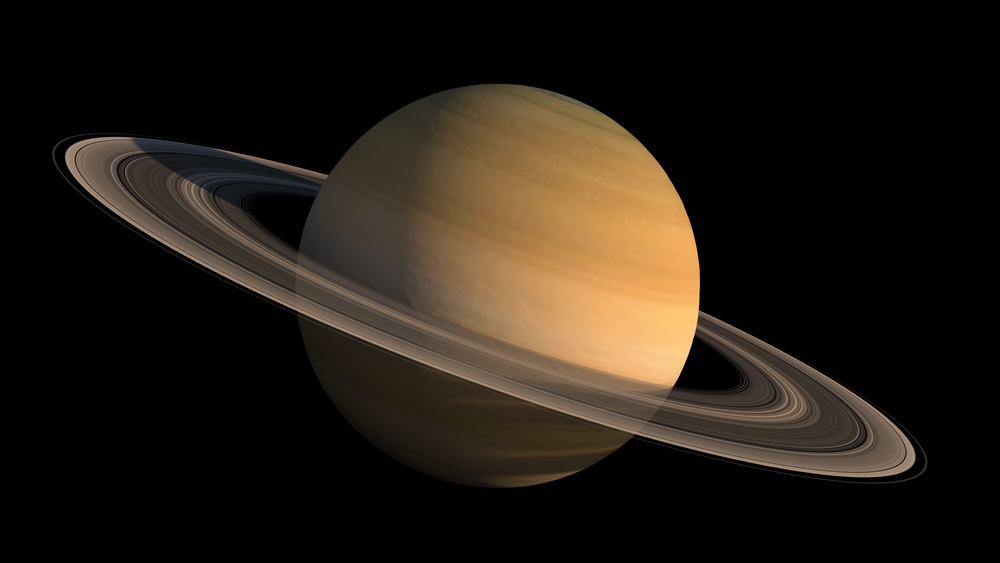Unlocking the Mysteries: 5 Surprising Facts About Saturn

Saturn, the sixth planet from the Sun, has always been a subject of fascination and wonder. With its striking rings and myriad moons, this gas giant stands out as one of the most intriguing celestial bodies in our solar system. Understanding Saturn is not just about satisfying curiosity; it offers valuable insights into the formation and evolution of planetary systems, both within our own solar system and beyond.
For those captivated by the mysteries of the cosmos, Saturn presents a treasure trove of surprises waiting to be uncovered. In this blog post, we will explore five surprising facts about Saturn that highlight its uniqueness and the importance of continued exploration. Prepare to be amazed by the wonders of this magnificent planet!
1. Saturn’s Stunning Rings
Saturn’s rings are arguably its most iconic feature, captivating astronomers and casual observers alike with their expansive and intricate structure. Composed primarily of countless particles of ice and rock, ranging in size from microscopic grains to massive boulders, these rings form an extensive and delicate cosmic dance around the planet.
Scientists believe the rings could be remnants of comets, asteroids, or shattered moons that were torn apart by Saturn’s powerful gravity. While their exact origins remain a topic of ongoing research, it is estimated that Saturn’s rings are relatively young in cosmic terms, possibly only a few hundred million years old. This dazzling encirclement serves as a reminder of the dynamic processes at play in our solar system and continues to inspire awe and curiosity.
2. Saturn’s Large Number of Moons
Saturn boasts an impressive array of moons, with a total of 83 confirmed moons orbiting the planet, each contributing to the complexity and allure of the Saturnian system.
Among these numerous moons, Titan and Enceladus stand out due to their unique characteristics and the groundbreaking discoveries associated with them. Titan, the largest of Saturn’s moons, is of particular interest because of its thick, nitrogen-rich atmosphere and surface lakes of liquid methane, painting a picture of an otherworldly, yet familiar, environment.
Enceladus, on the other hand, has gained fame for its geysers that spew water ice and organic molecules from a subsurface ocean beneath its icy crust, hinting at the potential for microbial life. These remarkable moons not only add to the diversity of Saturn’s satellite family but also play a crucial role in the ongoing quest to understand the potential for life elsewhere in our solar system.
3. Weather Extremes on Saturn
Saturn’s atmosphere is a turbulent and dynamic system, showcasing some of the most extreme and fascinating weather patterns in our solar system. Composed primarily of hydrogen and helium, the atmosphere is characterized by its stunning bands of clouds, driven by powerful jet streams that can reach speeds of up to 1,800 kilometers per hour (1,118 miles per hour).
Among the most notable atmospheric phenomena on Saturn are the Great White Spot storms, which are massive, recurring storms that can span thousands of kilometers. These colossal tempests, akin to Earth’s hurricanes but on a much grander scale, erupt approximately every 30 Earth years and are marked by their dramatic brightness and immense size.
Additionally, Saturn’s jet streams create fast-moving, alternating bands of weather that contribute to the planet’s striped appearance, displaying an interplay of light and dark regions that shift over time. These weather extremes not only highlight the dynamic and ever-changing nature of Saturn’s atmosphere but also offer a window into the complex atmospheric processes of gas giants.
4. Saturn’s Magnetic Field
Saturn’s magnetic field is a captivating subject of study due to its unique characteristics and its significant impact on the planet’s environment. Unlike Earth’s magnetic field, which is tilted relative to its rotational axis, Saturn’s magnetic field is almost perfectly aligned with its rotation. This alignment is still not fully understood and stimulates ongoing scientific investigation.
Saturn’s magnetic field is generated by the movement of metallic hydrogen within its core, creating a magnetic force that is about 578 times stronger than Earth’s. This powerful field extends well beyond the planet, encapsulating its rings and many of its moons in a protective magnetosphere. The presence of such a strong magnetic field affects Saturn’s space weather conditions, including the trapping of charged particles and the creating of stunning auroras at its poles, much like those seen on Earth but significantly more intense.
Understanding Saturn’s magnetic field not only helps scientists learn more about the gas giant itself but also offers broader insights into the magnetic properties and behaviors of other celestial bodies throughout the universe.
5. Enigmatic Hexagon at the North Pole
One of Saturn’s most mysterious and visually striking features is the enormous hexagonal storm located at its North Pole. Unlike any other weather phenomenon observed in our solar system, this hexagon is approximately 30,000 kilometers (18,640 miles) wide and has persisted for decades, if not centuries.
The storm boasts a perfect six-sided geometric shape that scientists have struggled to fully explain. Various theories suggest that the hexagon is formed by a combination of atmospheric processes, including the interaction of multiple jet streams and the unique rotation of Saturn itself.
Some researchers propose that similar phenomena could occur on other planets, but none have been as distinctly hexagonal or as enduring as Saturn’s storm. This unique weather pattern offers a remarkable contrast to the circular storms commonly found on other gas giants, such as Jupiter’s Great Red Spot, making Saturn’s hexagonal storm an unparalleled subject of fascination and ongoing scientific inquiry.
Conclusion
In exploring the wonders of Saturn, we’ve uncovered five surprising facts that highlight the planet’s unique and intriguing characteristics. From the delicate cosmic dance of its majestic rings to the myriad of moons with their own exceptional attributes, each aspect of Saturn paints a picture of a dynamic and captivating celestial body.
The extreme weather phenomena, including the colossal storms and the mesmerizing hexagonal storm at the North Pole, further showcase the planet’s atmospheric complexities. Additionally, Saturn’s magnetic field, which is both powerful and uniquely aligned, adds another layer of intrigue to our understanding of the gas giant.
The importance of continued exploration of Saturn cannot be overstated. As we delve deeper into its mysteries, we not only enhance our knowledge of Saturn itself but also gain broader insights into the workings of our solar system and beyond. Each discovery made by missions such as Cassini opens new doors of understanding, paving the way for future research and exploration.
In conclusion, Saturn remains one of the most enigmatic and awe-inspiring planets in our solar system. Its myriad of wonders stirs scientific curiosity and inspires a sense of wonder in all who study it. As we continue to unlock its mysteries, Saturn will undoubtedly continue to surprise and fascinate, proving that the cosmos holds endless secrets waiting to be discovered.
References
For readers interested in delving deeper into the fascinating aspects discussed in our exploration of Saturn, the following sources and further reading materials provide extensive information and insights:
- NASA – Saturn Overview
A comprehensive resource from NASA providing detailed information about Saturn’s composition, rings, moons, and exploration history.
- ESA – Cassini-Huygens Mission
European Space Agency Cassini-Huygens Mission
An overview of the Cassini-Huygens mission, including key discoveries and scientific contributions to our understanding of Saturn.
- Scientific American – The Great White Spot
The Science of Saturn’s Great White Spot
An article exploring the characteristics and implications of Saturn’s Great White Spot storms.
- Space.com – Saturn’s Hexagon
Space.com Article on Saturn’s Hexagonal Storm
An in-depth look at Saturn’s enigmatic hexagonal storm, including scientific theories and ongoing research.
- Wikipedia – Saturn’s Magnetic Field
Wikipedia: Saturn’s Magnetic Field
A detailed entry on Saturn’s magnetic field, its properties, and its significance in planetary science.
- The Planetary Society – Saturn Exploration
The Planetary Society’s Saturn Page
A collation of articles, mission updates, and scientific insights focused on various aspects of Saturn.
- Space Science Reviews – Saturn’s Rings and Moons
Scientific Journal Article on Saturn’s Rings and Moons
A peer-reviewed article offering detailed scientific analysis and findings related to Saturn’s rings and moons.
By exploring these references, readers can gain a more profound understanding of Saturn’s many wonders and the ongoing scientific efforts to unlock its mysteries.




